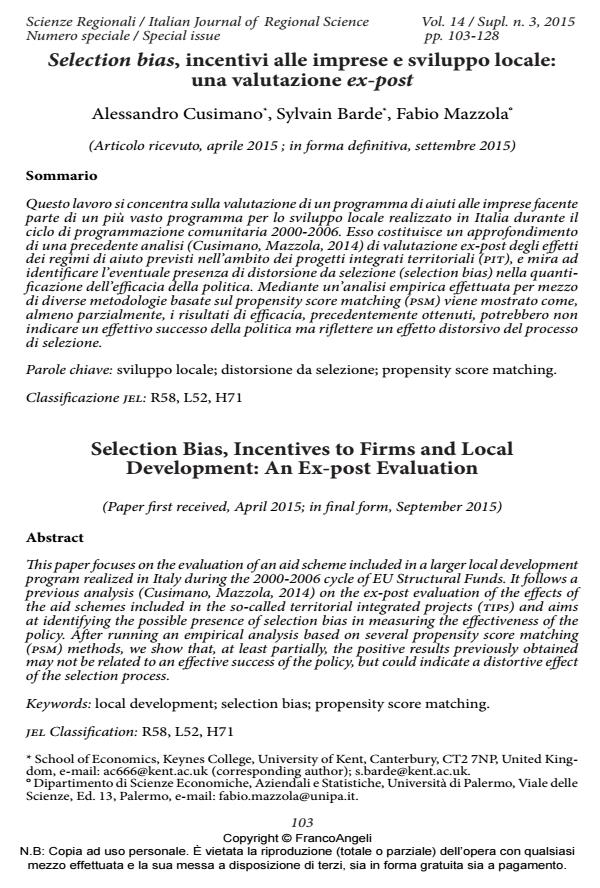Selection Bias, Incentives to Firms and Local Development: An Ex-post Evaluation
Journal title SCIENZE REGIONALI
Author/s Alessandro Cusimano, Sylvain Barde, Fabio Mazzola
Publishing Year 2015 Issue 2015/3 Suppl.
Language Italian Pages 26 P. 103-128 File size 318 KB
DOI 10.3280/SCRE2015-S03006
DOI is like a bar code for intellectual property: to have more infomation
click here
Below, you can see the article first page
If you want to buy this article in PDF format, you can do it, following the instructions to buy download credits

FrancoAngeli is member of Publishers International Linking Association, Inc (PILA), a not-for-profit association which run the CrossRef service enabling links to and from online scholarly content.
This paper focuses on the evaluation of an aid scheme included in a larger local development program realized in Italy during the 2000-2006 cycle of EU Structural Funds. It follows a previous analysis (Cusimano, Mazzola, 2014) on the ex-post evaluation of the effects of the aid schemes included in the so-called territorial integrated projects (tips) and aims at identifying the possible presence of selection bias in measuring the effectiveness of the policy. After running an empirical analysis based on several propensity score matching (psm) methods, we show that, at least partially, the positive results previously obtained may not be related to an effective success of the policy, but could indicate a distortive effect of the selection process.
Keywords: Local development; selection bias; propensity score matching.
Jel codes: R58, L52, H71
Alessandro Cusimano, Sylvain Barde, Fabio Mazzola, Selection bias, incentivi alle imprese e sviluppo locale: una valutazione ex-post in "SCIENZE REGIONALI " 3 Suppl./2015, pp 103-128, DOI: 10.3280/SCRE2015-S03006